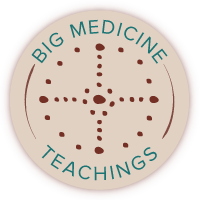 I was raised in Tulsa, Oklahoma and moved to Nashville, Tennessee in 1978 upon graduating from the University of Oklahoma with a B.S. degree in Elementary Education. As an enrolled member of the Osage Tribe, I spent many of my summers as a child participating in our In-Lon-Shka dances, which instilled a love for my culture and an appreciation of the practices of my tribe. I particularly loved these Indian dances because they afforded me the opportunity to be with my family. Each June, my brother and sisters and I would spend time with my grandmother, aunts, uncles, and cousins at the ceremonial campgrounds eating traditional fry bread and meat pies. Indian beliefs are not necessarily taught, so this encouraged me to ask questions and gather answers from my elders. These answers often appear simple, but their complexity lies in your ability to decipher the answer. I felt a desire to make sense of these teachings and personalize a deeper more spiritual understanding.
I was raised in Tulsa, Oklahoma and moved to Nashville, Tennessee in 1978 upon graduating from the University of Oklahoma with a B.S. degree in Elementary Education. As an enrolled member of the Osage Tribe, I spent many of my summers as a child participating in our In-Lon-Shka dances, which instilled a love for my culture and an appreciation of the practices of my tribe. I particularly loved these Indian dances because they afforded me the opportunity to be with my family. Each June, my brother and sisters and I would spend time with my grandmother, aunts, uncles, and cousins at the ceremonial campgrounds eating traditional fry bread and meat pies. Indian beliefs are not necessarily taught, so this encouraged me to ask questions and gather answers from my elders. These answers often appear simple, but their complexity lies in your ability to decipher the answer. I felt a desire to make sense of these teachings and personalize a deeper more spiritual understanding.
While visiting New Mexico in 1992, I climbed a mountain outside of Santa Fe near a turquoise mine. At the top, I discovered a circle of stones that seemed to be in an intentional pattern, and I was mesmerized. I knew the Circle was significant to our tribe, it felt very sacred, but I didn’t know exactly why. Within that year, I discovered the book, The Medicine Wheel, written by Sun Bear and his medicine helper, Wabun Wind. Sun Bear’s vision of the Medicine Wheel was to bring these teachings in a way for other’s to learn, and to understand their greater connection to the Earth Mother. It gave me a deeper understanding of the Four Directions, the Elements, and all of life. I then traveled with my three children to the Big Horn Mountains in Wyoming to see the largest known Medicine Wheel in North America. It was a very powerful experience. Being a Montessori teacher at the time, I decided to write a curriculum integrating this vision of the Native American Medicine Wheel with the Montessori philosophy of learning through exploration. What emerged were five teaching manuals based on Sun Bear’s vision of the Medicine Wheel, which I presented at many Montessori conferences.
In 1993, I formed a non-profit organization called the Tennessee Indian Education Association (TIEA), and pursued a bid to bring the National Indian Education Association (NIEA) conference to Nashville in 1998. The title for this conference was “Educating the Mind, Healing the Spirit.” I felt the conference did just that. Not only did it bring 3000 Indian educators to Tennessee for the first time since the Cherokee Removal of 1838, but to me, it also healed an aspect of the Trail of Tears that had strongly affected me since I was a child living in Oklahoma. TIEA hosted a commemorative walk called the Trail of Hope. Gayle Ross led the way just as her ancestor, Chief John Ross, led the Cherokee out of Tennessee along the infamous Trail. As part of TIEA, I spoke in Nashville schools on the accuracy of the Indian Removal Act of 1830. We brought several exhibits to the Tennessee State Museum, entitled, Moving the Fire: The Removal of Indian Nations to Oklahoma; The Principal People: The Cherokees in Tennessee Before 1838; and a Native cartographic exhibit entitled, Another America. With the Nashville Children’s Theatre, we collaborated on a curriculum and docudrama portraying the journey along the Trail of Tears for the Nashville public school system. After the conference ended, I went back to teaching for the next ten years.
In 2009, I retired from my career as a teacher, reading and learning specialist. I am grateful now to have the opportunity to incorporate my true passion for writing, teaching, and life coaching. My role as a Life Coach, Recovery Coach, Medicine Wheel Consultant, and Reiki Master allows me to share the wisdom of my teachers and ancestors to assist others in their journey of transformation.

